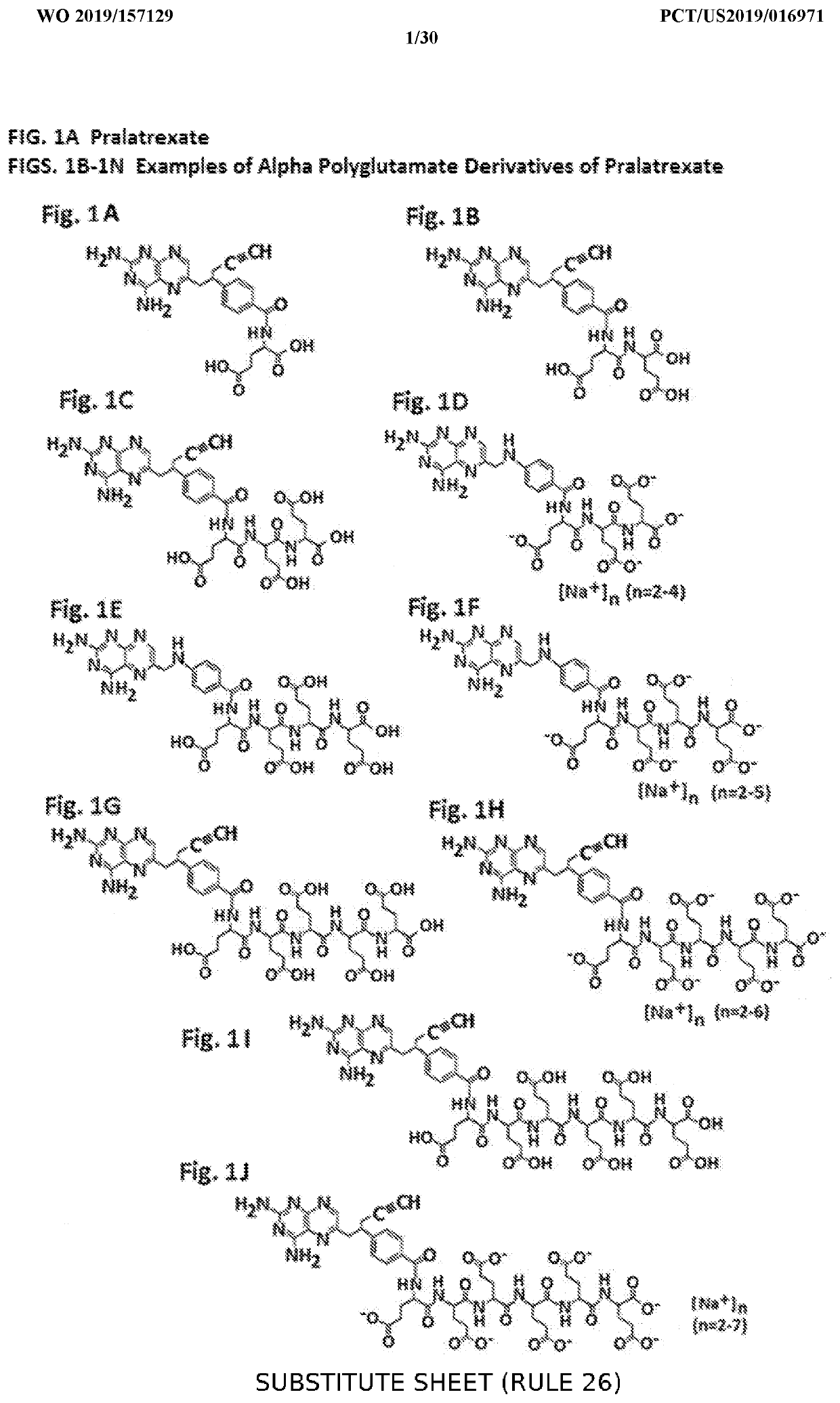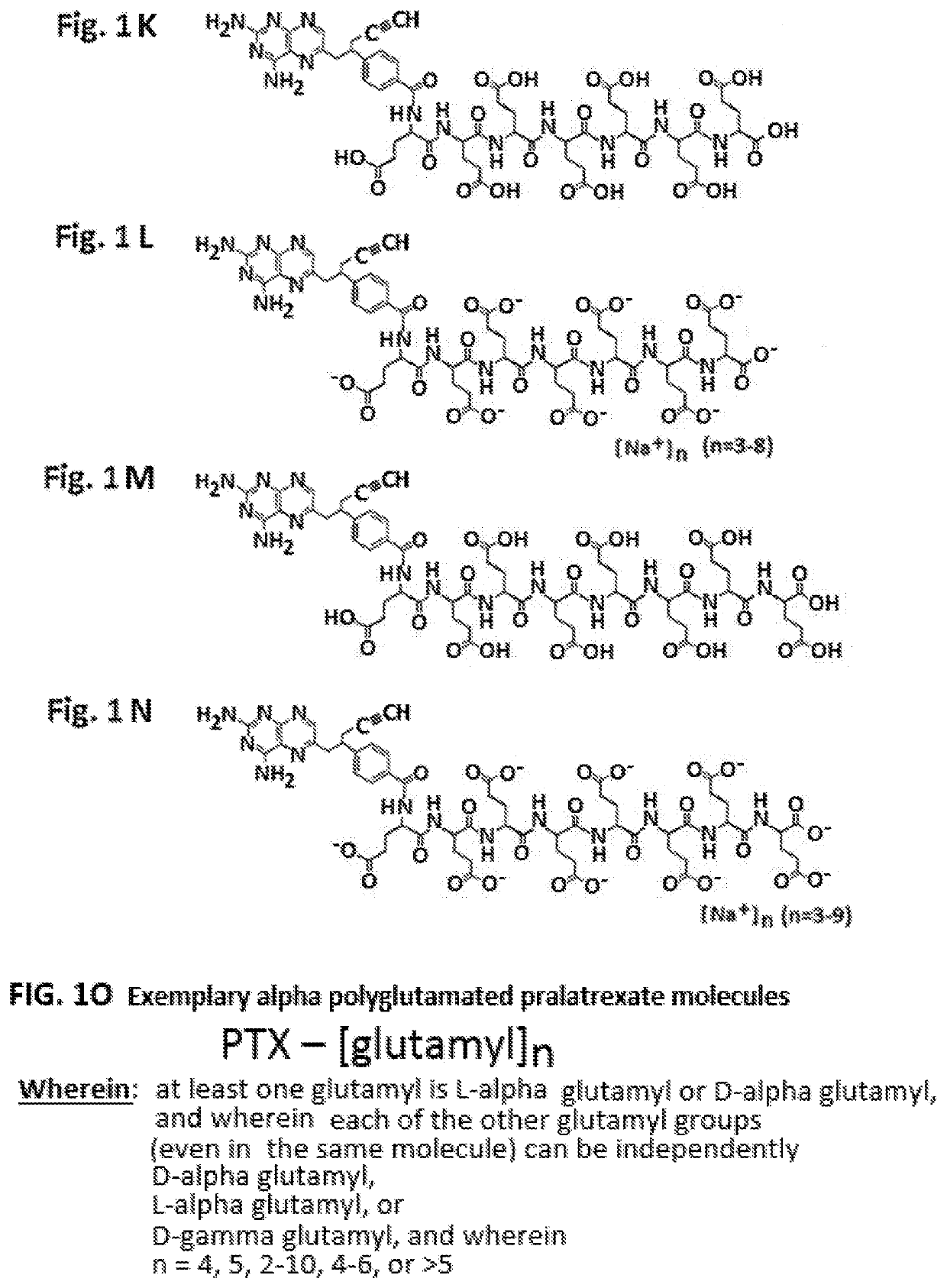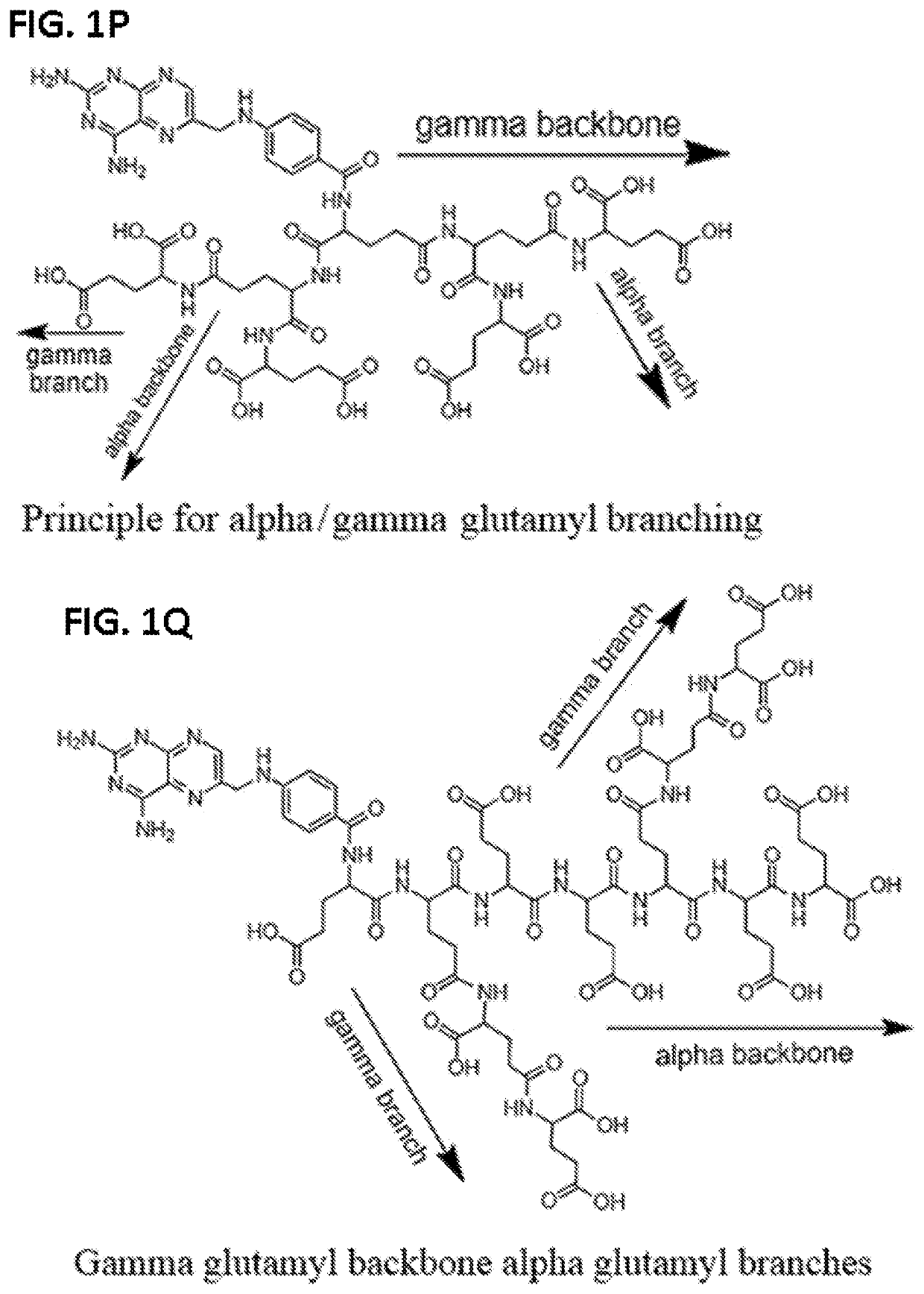Alpha polyglutamated pralatrexate and uses thereof
a technology of pralatrexate and polyglutamated pralatrexate, which is applied in the direction of drug compositions, immunoglobulins, peptides, etc., can solve the problems of pralatrexate treatment suffering from dose-limiting toxicity, affecting the efficacy and safety of pralatrexate delivery, and inhibiting these metabolic processes disrupting the formation of dna, rna, and key cellular proteins. achieve the effect o
- Summary
- Abstract
- Description
- Claims
- Application Information
AI Technical Summary
Benefits of technology
Problems solved by technology
Method used
Image
Examples
example 1
Alpha Polyglutamated Pemetrexed Compositions
Production of Alpha Hexaglutamated Pemetrexed (αHgPMX) Liposomes
[0616]Briefly L alpha hexaglutamated pemetrexed (aGR6) and D alpha hexaglutamated pemetrexed (aDGR6) were encapsulated in liposomes by the following procedure. First, the lipid components of the liposome membrane were weighed out and combined as a concentrated solution in ethanol at a temperature of around 65° C. In this example, the lipids used were hydrogenated soy phosphatidylcholine, cholesterol, and DSPE-PEG-2000 (1,2-distearoyl-sn-glycero-3-phosphoethanolamine-N-[methoxy (polyethylene glycol)-2000]). The molar ratio of HSPC:Cholesterol:PEG-DSPE was approximately 3:2:0.15. Next, the aGR6 or aDGR6 was dissolved in 5% dextrose at a concentration of 150 mg / ml with a pH of 6.5-6.9. The drug solution was heated up to 65° C. The ethanolic lipid solution was injected into the aGR6 or aDGR6 solution using a small-bore needle. During this step the drug solution was well stirred us...
example 2
mated Antifolate-Cisplatin Complexes (PGPD)
Methods:
[0633]Folate Analogues also known as antifolate have been an important anticancer treatment for the last 70 years. Used in this setting this class of anti-cancer drugs interferes with various enzymes in the important folate metabolic pathway. This can result in impaired pyrimidine and purine (DNA and RNA) synthesis, impaired amino acid glycine and serine metabolism, impaired redox response and impaired methylation processes within the cell.
[0634]In clinical practice, antifolates such as pemetrexed and methotrexate are often used in combination with platinum agents such as cisplatin and carboplatin. The combinations result in enhanced efficacy. In this context, we set out to coencapsulated the polyglutamates with platinum agents in a specific ratio to facilitate controlled delivery of a predetermined ratio of the two anticancer drugs namely a polyglutamated antifolate and a platinum analogue. We surprisingly discovered that long form...
example 3
Liposome Polyglutamated Pemetrexed Cell Delivery
Methods
Production of Targeted Gamma Hexaglutamated Pemetrexed (HGP) Liposomes
[0640]Gamma HGP (gG6) was encapsulated in liposomes and the liposomes were downsized and purified according to procedures essentially as set forth above in Example 1.
Antibody Conjugation
[0641]Activated liposomes were prepared by adding DSPE-PEG-maleimide to the lipid composition. The liposomes contain four different lipids: hydrogenated soy phosphatidylcholine (HSPC), cholesterol, 1,2-distearoyl-sn-glycero-3-phosphoethanolamine-N-[methoxy(polyethylene glycol)-2000] (DSPE-PEG-2000), and 1,2-distearoyl-sn-glycero-3-phosphoethanolamine-N-[maleimide (polyethylene glycol)-2000] (DSPE-PEG-maleimide), in ratios of 3:2:0.1125:0.0375.
[0642]Antibody thiolation was accomplished through use of Traut's reagent (2-iminothiolane) to attach a sulfhydryl group onto primary amines Antibody was suspended in PBS at a concentration of 0.9-1.6 mg / ml. Traut's reagent (14 mM) was add...
PUM
| Property | Measurement | Unit |
|---|---|---|
| Fraction | aaaaa | aaaaa |
| Fraction | aaaaa | aaaaa |
| Fraction | aaaaa | aaaaa |
Abstract
Description
Claims
Application Information
 Login to View More
Login to View More - R&D
- Intellectual Property
- Life Sciences
- Materials
- Tech Scout
- Unparalleled Data Quality
- Higher Quality Content
- 60% Fewer Hallucinations
Browse by: Latest US Patents, China's latest patents, Technical Efficacy Thesaurus, Application Domain, Technology Topic, Popular Technical Reports.
© 2025 PatSnap. All rights reserved.Legal|Privacy policy|Modern Slavery Act Transparency Statement|Sitemap|About US| Contact US: help@patsnap.com



